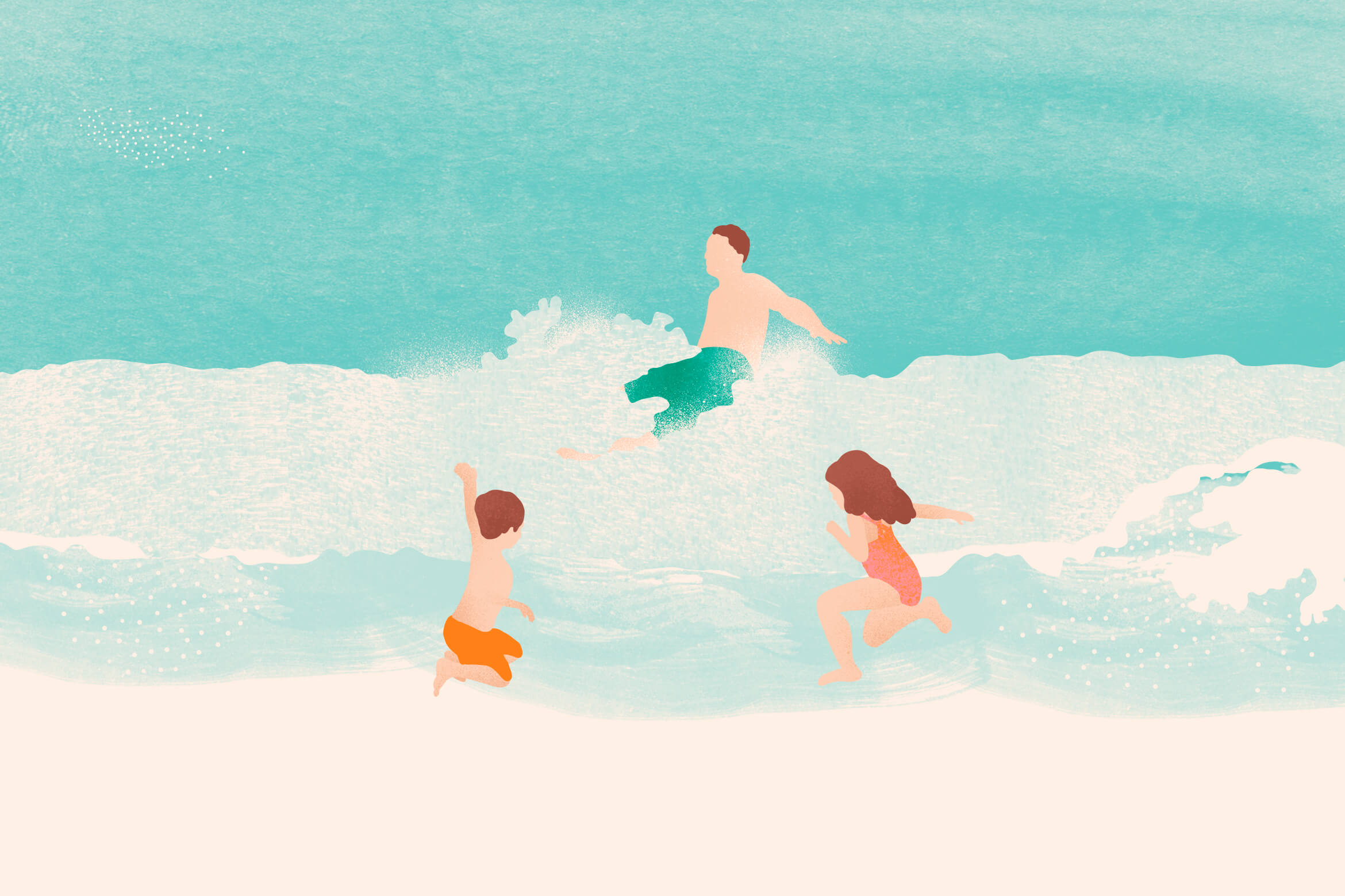A common question at our swim school is "When will I see her doing strokes?" If you pause to think about your child learning to swim, what is it you visualise? Most likely, they're swimming freestyle, independently, with confidence through the water. But for this to happen, and for your child to feel comfortable in water, there's quite a bit of behind-the-scenes work to get them there.
The ideal of a strong swimmer is inherently ingrained in our collective conscious, isn't it? It's this ideal that can rob our kids of a positive relationship with swimming though. And when Sydney's beautiful Eastern Suburbs are your backyard, who doesn't want to be able to pass down their love of water to their kids?! It's a rite of passage!
If you want your child to feel comfortable in the water though, we need to begin by slowing everything down.
Before we swim comfortably in the water, we must float!
Our philosophy here at In The Deep is to slow kids down. By doing this, they get to experience the wonder of this new world, and find themselves at ease when they're learning to swim. Before we add movement, we want to ensure the foundations are in place. We want kids to feel safe, and to physically understand and feel their buoyancy. It's the difference between a child gliding gracefully through the water, and fighting it the whole way to the wall.
Learning to float is the key ingredient to a child learning how to feel comfortable in the water. Skip this step at your own peril. They'll miss out on learning to simply relax in the water, to be free to play and explore without having to swim strokes or find the nearest wall or adult. This is the stage where kids can discover that the water can be their happy place, their new best friend. To rush into strokes is a missed opportunity. It takes away their ability to simply be still in the water, without the need to go anywhere.
Floating completely alters the relationship a child has to the water; one where they're able to feel comfortable. If a child doesn't know how to float, they'll instinctively panic and fight the water. They'll sink.
We place a lot of emphasis on floating to help a child become more comfortable in the water. In our learn to swim program, we teach a back float with a glide early on, so we move a child through the water at the same time. A lot of programs will teach a kind of starfish move where you're required to remain still. Floating on your back when you don't trust the water, is a vulnerable position to be in. So by adding movement, they're feeling something; it feels more supportive. When you're first starting out, this makes a huge difference. Being able to feel where you are in the water helps kids learn to trust it's supportiveness much earlier.
TIP #1
Try encouraging your child to hold their breath, look at the floor face down in the water and gently, slowly let them go. Counting is a clear aim for them to feel safe in. Count to five to start with, and then progress to ten! Always have your arms available to grab onto. This can be a big confidence builder.
Consistency and repetition create the space for trust.
Learning to swim can cause anxiety. Especially when kids don't know what to expect. It could be the experience of having a different teacher, or they get held differently. Or instructions aren't described with consistency. To reduce anxiety, we need to eliminate as much change as possible. What do we do to relieve these unknowns? We have a lesson plan. Our teachers are trained to teach the same thing. They use the same key words for every activity, they hold the child the same way. There's so much consistency and repetition built in to our program. And it shows: kids start to feel more comfortable because they know what to expect and they practice. Our approach helps them to build trust with the water and their abilities.
TIP #2
Keep things simple and repeat small steps a lot of times. Slow them down. Repeat things over and over until they’re comfortable and become familiar. Try doing something you know they’re comfortable with, and after a few turns, encourage them to take another step, eg. float longer, on their own, swim longer, further.
Mary Poppins was right. A spoonful of sugar helps the medicine go down!
One of the best ways we can help children feel more at ease is to meet them on their level. In our classes we use creative language and imagery that ignites their imaginations. We know that kids can easily tense up in a pool environment. It's a large body of water and there's generally a lot going on in and out of the pool. The more fun, humorous and playful we are, the more likely we'll see tension dissolve. Getting them out of their head and into their body, frees them up to learn and relax!
TIP #3
When you notice your child is holding tension in the water, try getting them to imagine they're a jellyfish. Do it along with them to shake off those nerves and release the tension. This is a great opportunity to encourage fun and practice getting your child to feel comfortable in the water.
Are they still yet to place their head under the water? Read this article for extra tips.
For your child to feel comfortable in the water, your style of guidance matters too.
Teachers that know how to build courage in kids are also vital. In our interviewing process, we look for compassionate people. It's a fine line we tread. We want teachers who are empathetic to a child's fears, but will also — lovingly, kindly — push them outside their comfort zone. If we didn't, we'd be holding back their progress because of our own fear. Swimming is a complex skill that does takes courage along the way. By being both kind and firm, we end up empowering kids to become more comfortable in the water. The courage they discover within themselves, by doing things they're afraid to do is a beautiful magic that unfolds over time.
TIP #4
A little bit of love, swims a long way. Try to challenge your child to step outside of their comfort zone, whilst being supportive and assuring them that you've got their back. Be a master of persuasion and celebrate every small win! Don’t give up when kids say no, they really just need to know they’ll be ok and that you’ll be there to help them.
Go slow to go further!
We put so much pressure on ourselves and everyone around us, which ends up starving us of the beauty in the journey. Learning to become comfortable in the water is a worthwhile pursuit for a lifetime of joy, by and in the water.
What's the best thing we can do to help a child feel comfortable in the water?
Slow the process down, have them learn to enjoy the feel of the water. It helps them build trust before they start to swim and do strokes. Take this approach and you'll most likely help them fall in love with one of the most precious gifts we have as humans – the water is all we need! The second-best thing? Start as soon as possible to secure a big win for your kids!
Sea you in the water! Sasha x



No comments.